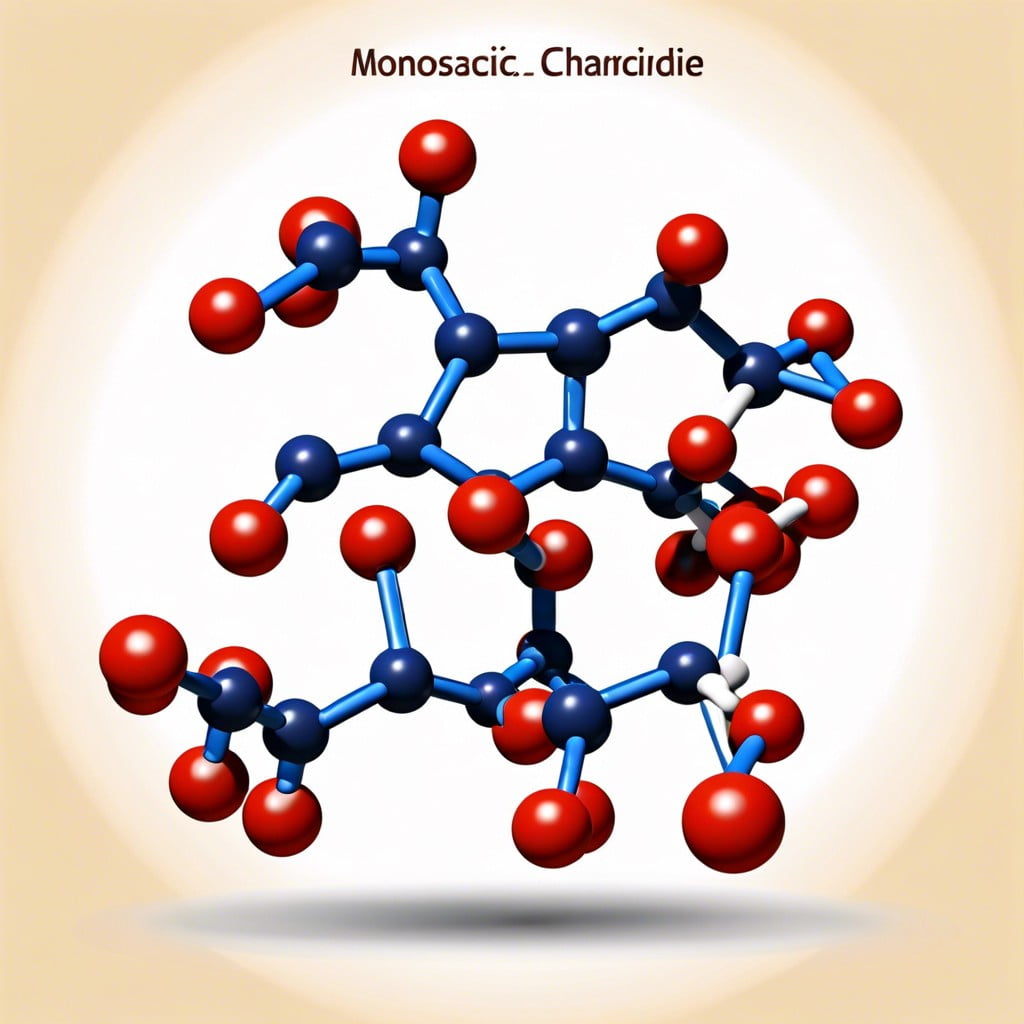In this article, you’ll learn about the fascinating structures of carbohydrate polymers and how these structures impart unique properties to these essential molecules.
Key takeaways:
- Monosaccharides: Simple sugar molecules with different structures and provide energy.
- Disaccharides: Double sugars formed by two monosaccharides, play roles in energy storage.
- Polysaccharides: Complex structures built from multiple monosaccharide units, have various functions including energy storage and structural support.
- Polysaccharide Identification Tests: Iodine, Benedict’s, and Biuret tests can help identify polysaccharides.
- Polysaccharides’ versatility: They have roles in cell signaling, immune response, and as prebiotics.
Monosaccharides: The Sweet Ones

Monosaccharides are the simplest form of carbohydrates, consisting of single sugar molecules. Imagine them as the individual Lego blocks in a massive, sprawling Lego castle that is a complex carbohydrate.
Glucose, fructose, and galactose are the main stars of the monosaccharide world. Each one has a slightly different structure, but they all play by the same rule—providing energy. Glucose is the ultimate fuel for your cells, even your brain gets in on the glucose action to keep things running smoothly.
Chemically, these sugars are made up of carbon, hydrogen, and oxygen atoms arranged in chains or rings. This structure makes them soluble in water, which is super handy since it means they can travel easily through your bloodstream, spreading sweet, sweet energy everywhere they go.
So next time you enjoy a piece of fruit, give a little nod to the monosaccharides, the tiny sugar heroes making that sweet taste possible.
Disaccharides
Disaccharides, often dubbed the “double sugars“, are made up of two monosaccharides linked by a glycosidic bond. Think of them as best friends holding hands. Common examples include sucrose (table sugar), lactose (found in milk), and maltose (in malted foods and beers).
Here’s how that magical bond forms: When two sugar molecules meet, they undergo a dehydration reaction, losing a water molecule and forming a bond. It’s like a sugar pact—they join forces and become sweeter together.
Apart from their presence in your favorite sweets and dairy products, disaccharides play critical roles in energy storage. They serve as transport sugars in plants, helping move energy from where it’s made (in the leaves) to where it’s needed (everywhere else). Without them, plants wouldn’t be able to do their job, and let’s face it, neither could we.
Polysaccharides
Polysaccharides are like the complex cities of the carbohydrate world, built from simpler structures for more elaborate functions. These macromolecules are formed when more than ten monosaccharide units come together, typically via glycosidic bonds. Think of them as a train where each carriage is a sugar unit; the train can be quite long!
Starch and cellulose are prime examples, playing critical roles in energy storage and structural support, respectively. While both are made from glucose, the way glucose units are linked differs. This slight change in architecture makes starch digestible and cellulose, not so much, unless you’re a termite.
Glycogen is another key player, known as the energy reserve in animals, similar to starch in plants. It’s stored primarily in your liver and muscles, ready to be broken down to glucose when your body screams for energy.
These heavyweights are not just about structure and storage; they also have roles in cell signaling, immune response, and as prebiotics, serving as a food source for beneficial gut bacteria. They’re the ultimate multitaskers of the carbohydrate family!
Chemical Identification Tests for Polysaccharides
Imagine you’re a detective, but instead of solving crimes, you’re uncovering the secrets of polysaccharides. Here’s how you can crack the case:
First up, the iodine test. Just a few drops and watch for a color change. If it turns blue-black, congrats, you’ve likely got starch in your sample.
Next is the Benedict’s test, useful for catching those sneaky reducing sugars often found with polysaccharides. Heat the sample with Benedict’s solution; a red precipitate means you’ve nailed it.
Lastly, there’s the Biuret test. This one’s a bit of a trickster because it’s primarily for proteins, yet an important null result helps confirm polysaccharides, helping you exclude proteins that might be crashing your polysaccharide party.
Deploying these tests can feel like magic, turning your speculation into scientific spectacle!
Recap




